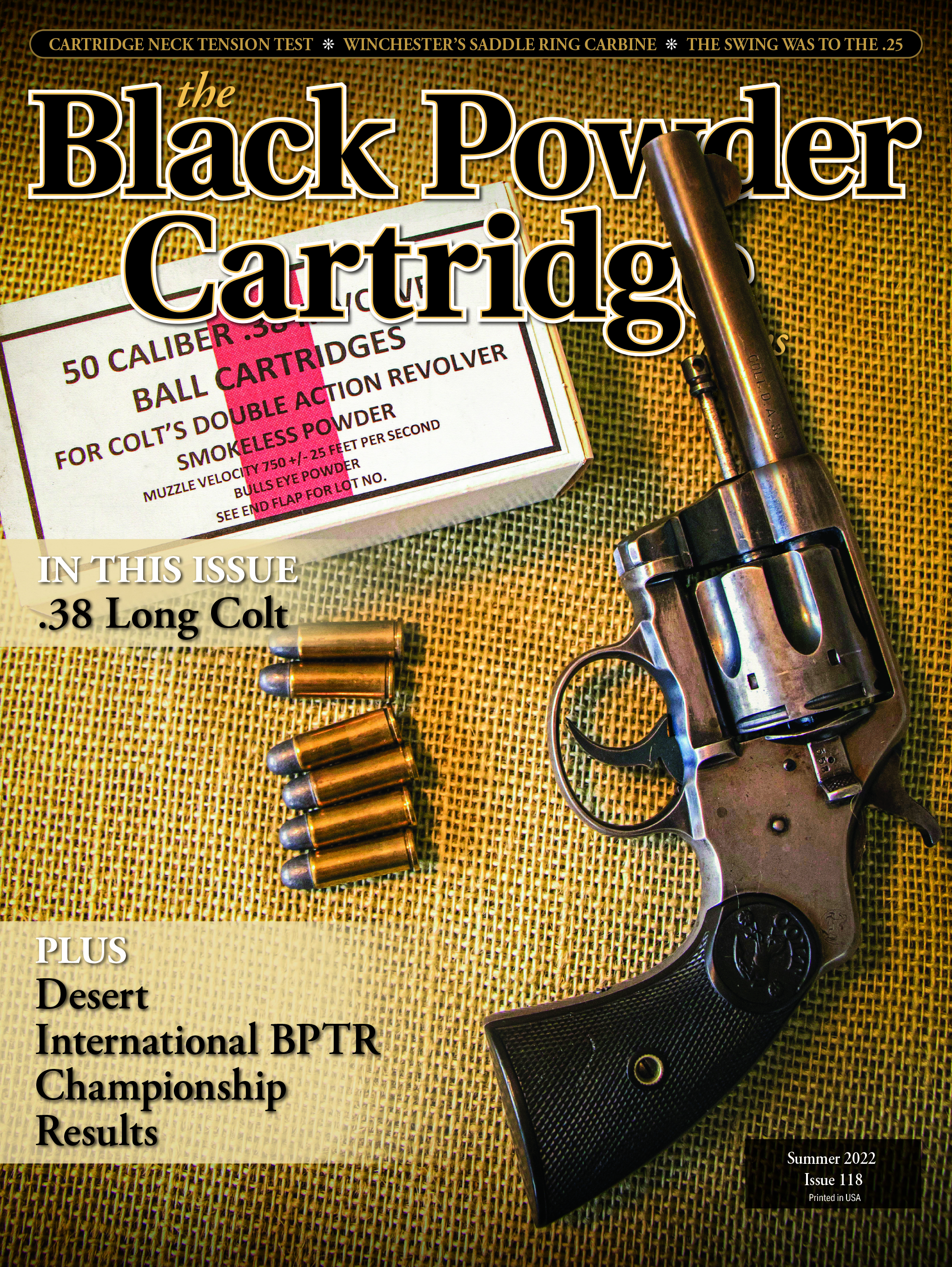S.B. Elkins and The Last of the Buffalo
feature By: Leo J. Remiger | June, 22
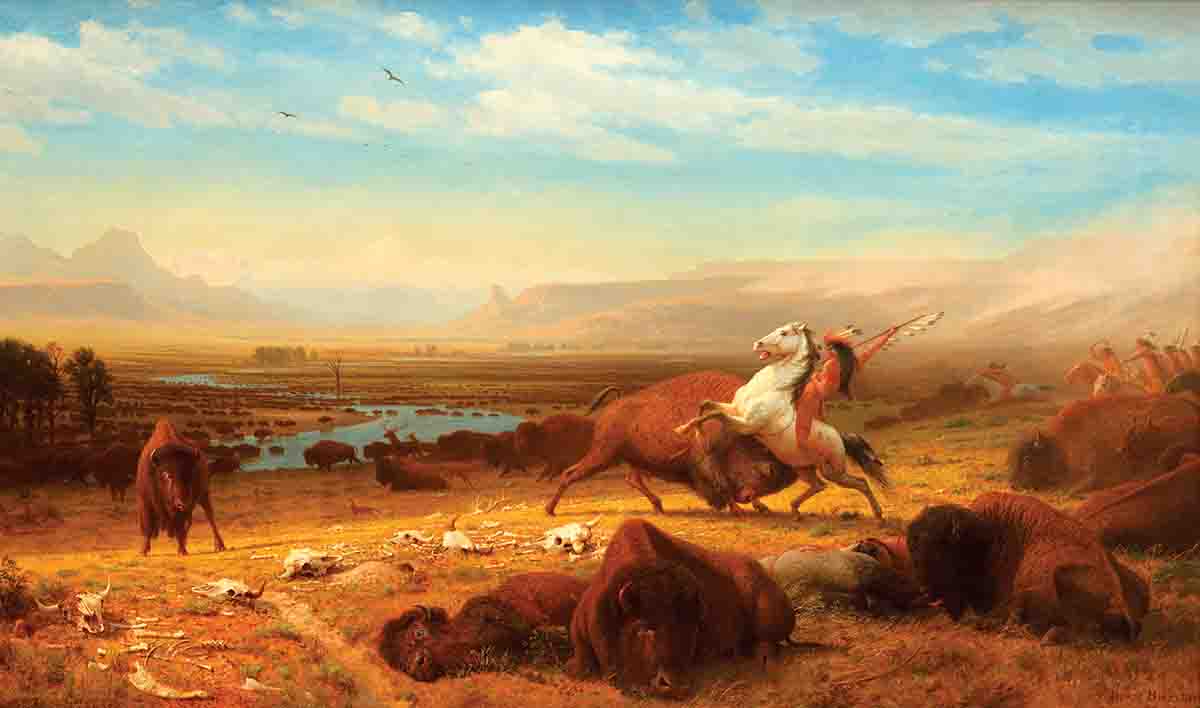
"Elkins Hunting Buffaloes" appeared in the June 6, 1888, issue of the San Antonio Daily Express on page 2:
Elkins Hunting Buffaloes
Satisfied When He Had
Killed One Animal
His Narrow Escape from Death
S.B. Elkins, who spent half his lifetime in New Mexico and on the plains, having crossed them 13 times before transcontinental railroads were built, saw the declining years of Bent, St. Vrain and Kit Carson and himself experienced much of the discomforts, excitements and vicissitudes of plain life on the prairies, says the New York Tribune. He went into to see Albert Bierstadt’s half-finished picture of a buffalo hunt the other day. The central figure is an infuriated buffalo bull, which has turned to gore an up-rearing horse, the rider on which is endeavoring to break the attack with a spear. It led Mr. Elkins to exclaim:
“That takes me back twenty-five years to similar experience of my own.”
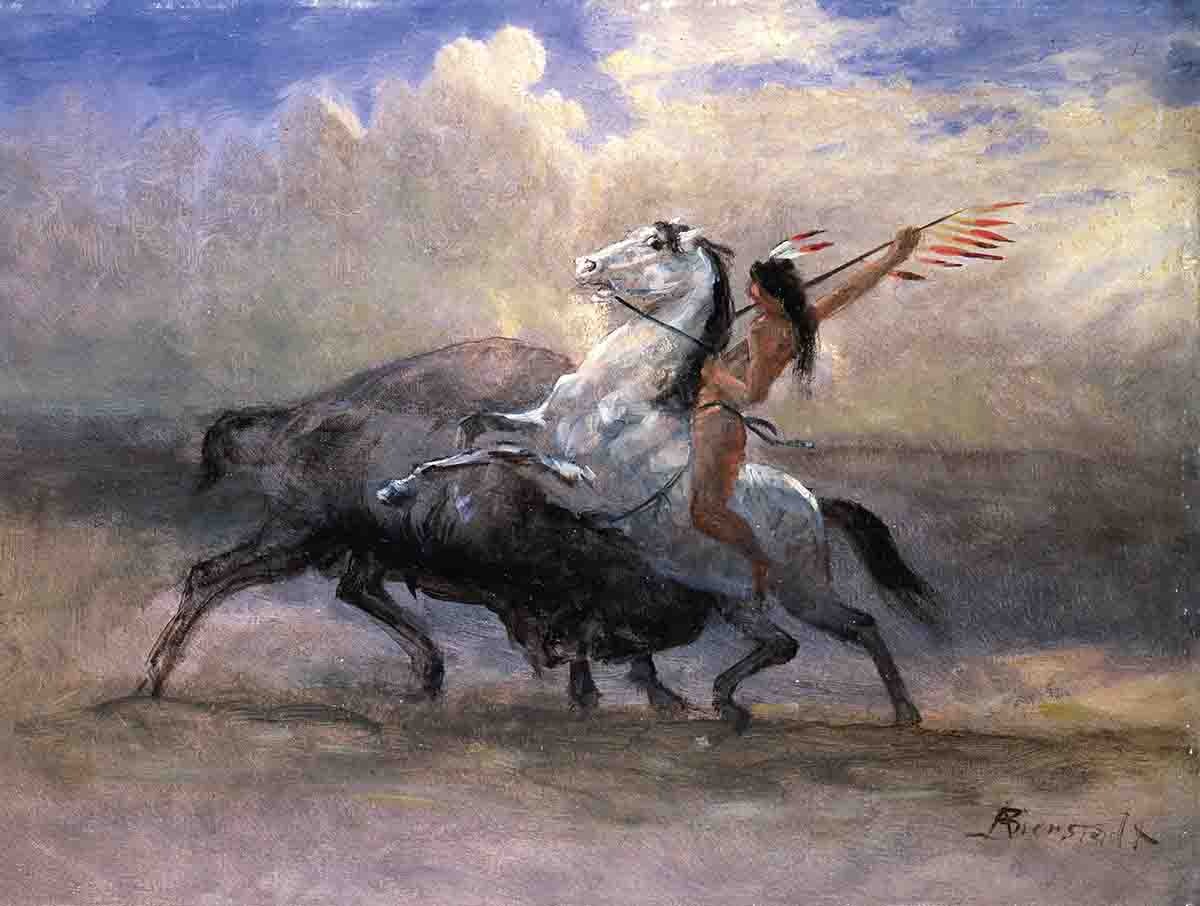
“It was my first and only buffalo hunt. I was traveling with a wagon train for protection against the Indians, who were on the warpath and savage. We were approaching Fort Larned, on the old Pawnee Fork. The Indians were so bad that we had massed three trains together, making about seventy-five or eighty wagons and 120 men, and we kept close together. There were a number of expert buffalo hunters in the train who would ride out almost any time and kill a buffalo for meat. I have seen them do it hundreds of times. Their horses were trained to run right alongside the beast, when they would fire into him just back of the foreleg. The meat would be cut up and covered with dust. This coating we would cut off at night and find the juicy meat underneath.
“Well, we had made camp for a day within a couple miles of Fort Larned when I saw a herd of buffalo about a mile away, and I determined to try my luck. I borrowed a big gray buffalo horse and started across the fork of the river after my game. I had a Sharp’s rifle and two big heavy revolvers. The distance to the beasts was much greater than it looked but I finally overtook one and fired two bullets into him from a revolver. The horse had brought me right alongside for this purpose. The buffalo didn’t fall or slack up, and I was getting my rifle ready to shoot when the horse gave an awful sidewise lunge.
“We were going at a rapid rate. I hadn’t been watching the beast. The horse had, and being well trained had jumped to avoid a goring from the buffalo, who, feeling the effects of the shots, had become infuriated and turned on us. I wasn’t prepared for the shock, and was nearly unhorsed. My rifle went one way, my revolver another. I was thrown out of the saddle, back on the horse’s haunches and only saved myself by grasping the saddle in both hands. If I had fallen off the buffalo would have gored me to death. By this time the buffalo was chasing the horse, who could easily keep away from him and a sixty yards race ended the buffalo’s purpose to catch us. He turned and went on his way. I was terribly bruised and sore, but I was also mad all over, for I knew they were watching me from the camp with field glasses, and I rode back to get my carbine with a determination to get that buffalo or die.
“It was some time before I got in range again, but the rifle brought him down. Just as he fell an Indian rose up in the grass a hundred yards away from me and behind him at longer distances four or five more. They had been watching the entire affair and probably expected to capture my effects if the buffalo got the best of me. As they might be hostile, although the fort was near, I started for the trail without cutting the tongue, which is customary, so that no one will disturb the carcass till you go back after it. The Indian came up to within twenty yards of me and cried out “friend” in Spanish, but I motioned him back and pointed to the buffalo, all the time walking my horse faster and faster toward camp. When I got in, my friends had a big laugh over my exploit. I told them they might have all the buffalo hunting thereafter, as I was satisfied with one experience.”1
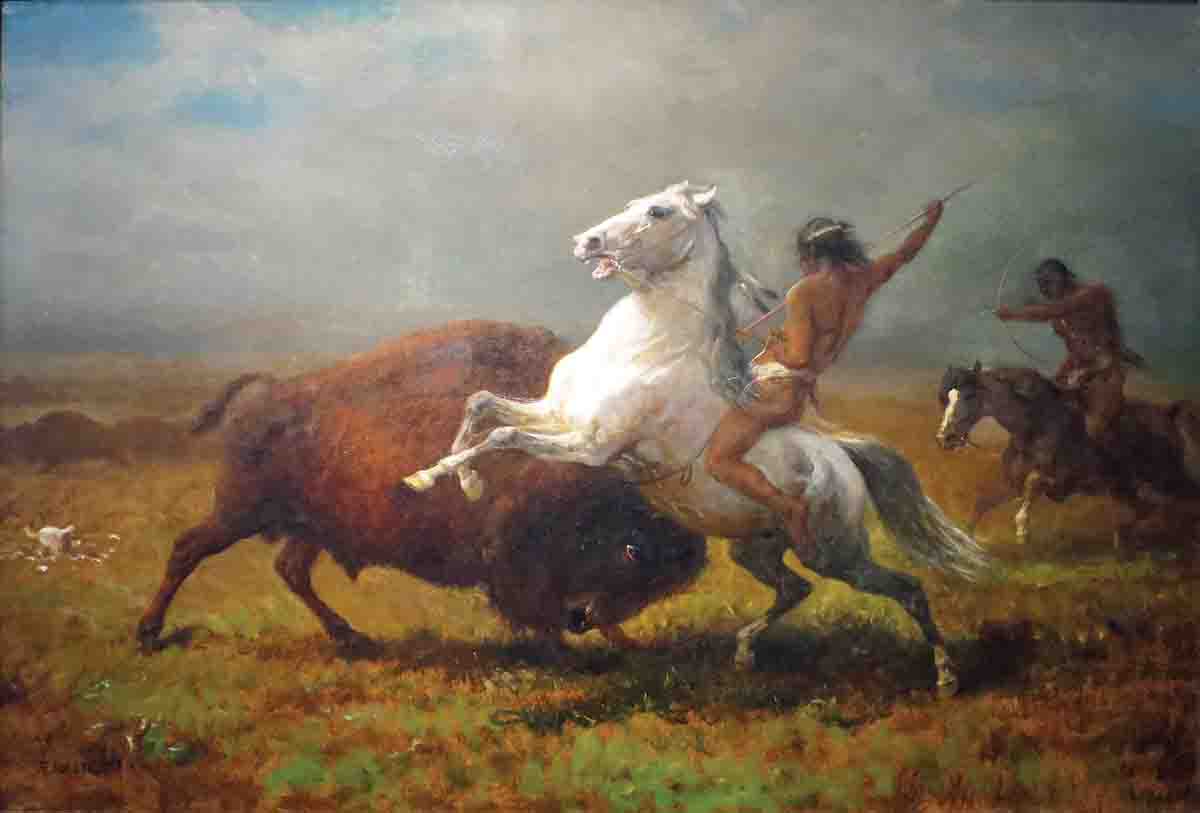
A quick search on the internet provided some potential painting images that Elkins could have seen as well as the full painting. We show the full painting at the beginning of this article, but there were at least three study paintings that Elkins may have seen as well.
We will never know which of the paintings he saw. Nor will we know exactly what message Bierstadt was trying to convey. There are a multitude of interesting subjects in the painting, including buffalo and their calves, a downed hunter and his horse, other hunters on horseback, prairie dogs, antelope, coyotes and elk to name just a few. Many are the individuals who have attempted to convey their interpretations of his message to the public. Unfortunately, it’s too late to ask Bierstadt. It is also too late to find out the actual source for his inspiration for his painting.
However, having said that, there is a pioneer reminiscence provided by E.S. Comstock and recorded by Clarendon E. Adams, which describes an event that certainly influenced Bierstadt. The narrative is titled Stirring Events Along the Little Blue and was published in the 1916 edition of the Collection of Nebraska Pioneer Reminiscences. I have extracted some pertinent paragraphs below:
“The following narrative of Albert Bierstadt’s visit to what is now Nuckolls county, Nebraska, was told to me by Mr. E.S. Comstock, a pioneer of the county. Mr. Comstock made his first settlement in this county at Oak Grove, in 1858, and was in charge of the Oak Grove ranch when this incident took place.”
“In 1863 Mr. Bierstadt returned from the Pacific coast via the Overland stage route, which was then conducted by Russell, Majors & Waddell, the pioneer stage and pony express men of the plains. Arriving at Oak Grove ranch, Mr. Bierstadt and his traveling companion, a Mr. Dunlap, correspondent of the New York Post, decided to stop a few days and have a buffalo hunt. In company with E. S. Comstock, his son George, and a neighbor by the name of Eubanks, who was killed by the Indians the next year, they proceeded to the Republican Valley and camped the first night in the grove on Lost Creek, now known as Lincoln Park. The following morning the party proceeded up the river to the farm now owned by Frank Schmeling. Here they discovered a large herd of buffalo grazing along the creek to the west and covering the prairies to the north for several miles. Mr. Comstock says that it was one of the largest herds of buffalo he had ever encountered and that Mr. Bierstadt became greatly excited and said, “Now, boys, is our time for fun. I want to see an enraged wounded buffalo. I want to see him so mad that he will bellow and tear up the ground.’’ Mr. Comstock said they arranged for the affray: Mr. Bierstadt was to take his position on a small knoll to the east of the herd, fix himself with his easel so that he could sketch the landscape and the grazing bison, and when this was done the wounding of one of the buffalo bulls was to take place.
“Bierstadt was stationed on a small knoll in plain view of the herd; Mr. Eubanks was stationed in a draw near Bierstadt, in order to protect him from the charges of the buffalo, if necessary. George Comstock was to select a buffalo bull from the herd and wound him and then tantalize him by shaking a red blanket at him until he was thoroughly enraged, then he was to give him another wound from his rifle and lead out in the direction of Mr. Bierstadt.
“The wounded buffalo became furious and charged Comstock’s horse repeatedly, but Comstock, being an expert horseman, evaded the fierce charges and was all the time coming nearer to Bierstadt. When within about three hundred yards, Comstock whirled his horse to the side of the maddened monster. As a buffalo does not see well out of the side of his eyes on account of the long shaggy hair about the face, Comstock was lost to his view. The infuriated animal tossed his head high in the air and the only thing he saw was Bierstadt. Onward he rushed toward the artist, pawing the ground and bellowing furiously. Bierstadt called for help and took to his heels. The buffalo struck the easel and sent it in splinters through the air. Onward he rushed after the fleeing artist, who was making the best time of his life. Mr. Comstock said he was running so fast that his coat tails stuck so straight out that you could have played a game of euchre on them. The buffalo was gaining at every jump.
“At this point in his story Mr. Comstock became greatly excited. He was standing on the identical spot telling me the story, and was living the exciting scene over again. ‘’Why,’’ he said, ‘’I thought Eubanks never would shoot. I was scared. The buffalo nearly had his horns under Bierstadt’s coat tail. He was snorting froth and blood all over him, but the gun cracked and the buffalo fell and Bierstadt was so overcome he fell at the same time entirely exhausted, but saved from a fearful death.’’ When he recovered sufficiently to talk, he said, ‘’That’s enough; no more wounded buffalo for me.’’ Mr. Bierstadt was several days recovering from his fearful experience, but while he was recovering, he was painting the picture. “Mr. Dunlap, the correspondent, wrote a graphic and vivid pen picture of the exciting scene,’’ said Mr. Comstock; ‘’but when Mr. Bierstadt finished his picture of the infuriated charging buffalo and the chase, the pen picture was not in it.’’
“This was the painting that brought Bierstadt into prominence as an artist. It was exhibited at the first Chicago exhibition and was sold for $75,000. I saw the picture in Chicago before I heard Mr. Comstock’s narrative, and as I was one of the owners of El Capitan Rancho, the landscape of the famous painting, I fixed his story vividly upon my memory. Mr. Mike Woerner now owns a portion of El Capitan Rancho, the landscape of this famous painting. A portion of this original painting is embraced in Mr. Bierstadt’s masterpiece, “The Last of the Buffalo.‘’2
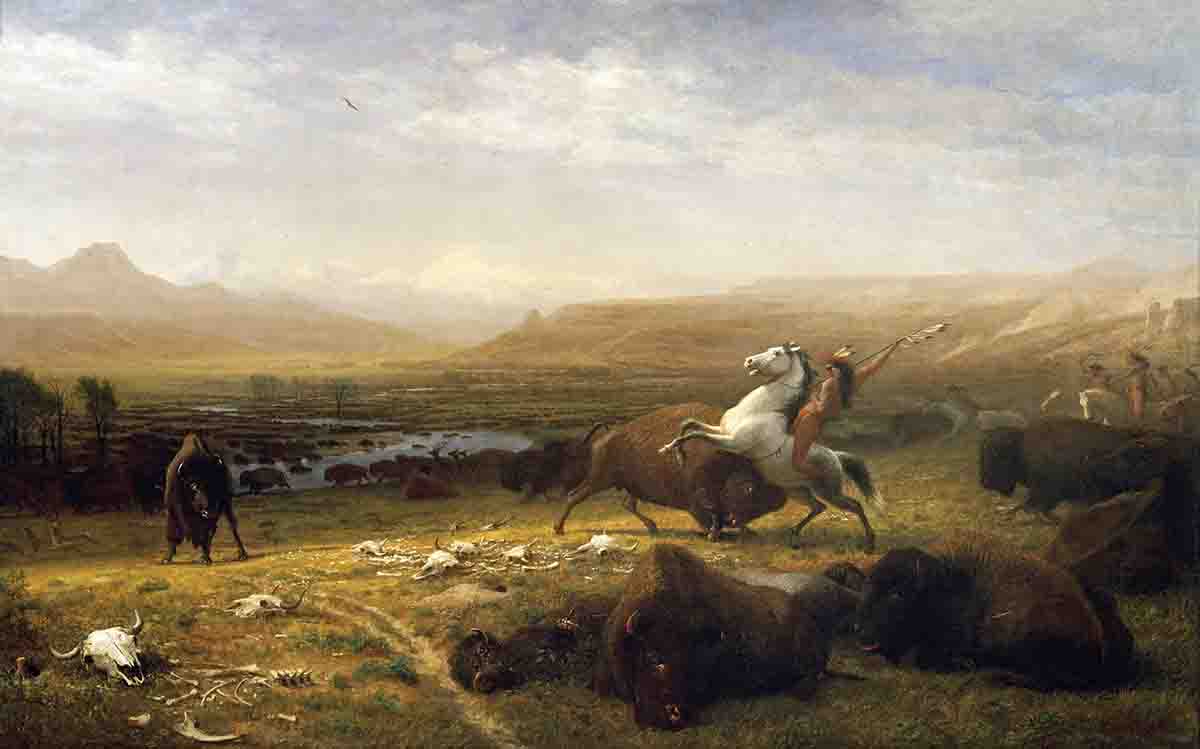
Albert Bierstadt was an accomplished and prominent artist whose popularity was in decline when he painted The Last of the Buffalo, which is considered to be one of his final great western paintings.
In 1888, Albert Bierstadt was a member of the Boone and Crockett Club.
Bierstadt actually painted two paintings in 1888, titled The Last of the Buffalo – one is on display at the Whitney Western Art Museum in Cody, Wyoming, and the other is on display at the National Gallery of Art in Washington D.C., in the Corcoran Collection and was a gift donated by none other than Mary Stewart Bierstadt (Mrs. Albert Bierstadt).
The first The Last of the Buffalo painting was rejected by a committee of fellow artists from inclusion in the American display at the 1889 Paris Exposition Universelle. Bierstadt exhibited the painting with the Paris Salon instead.
The second The Last of the Buffalo sold for $50,000, the largest price paid for a painting by an American artist in the nineteenth-century.3
So, which painting do you think S.B. Elkins saw?
1Elkins Hunting Buffaloes, San Antonio Daily Express, San Antonio, Texas, 6 Jun 1888 Page 2
2Stirring Events Along the Little Blue, Clarendon E. Adams, Collection of Nebraska Pioneer Reminiscences, The Torch Press, Cedar Rapids, Iowa, 1916, pp 214-218
3Bierstadt: The Last of the Buffalo, McClure, Nancy; centerofthewest.org/2018/06/26/bierstadt-last-of-the-buffalo/


